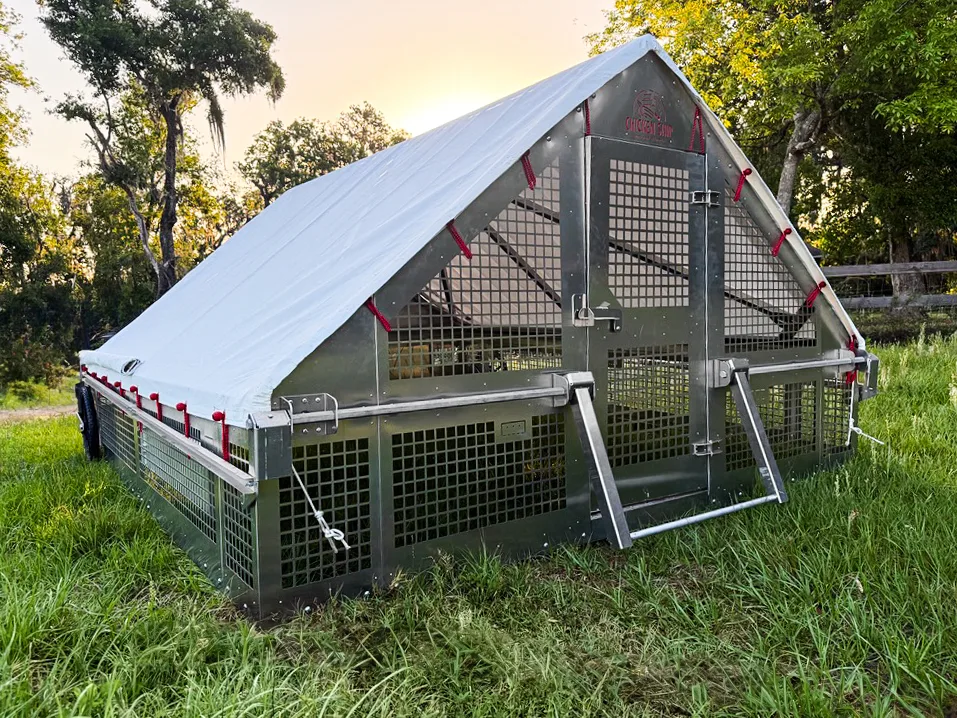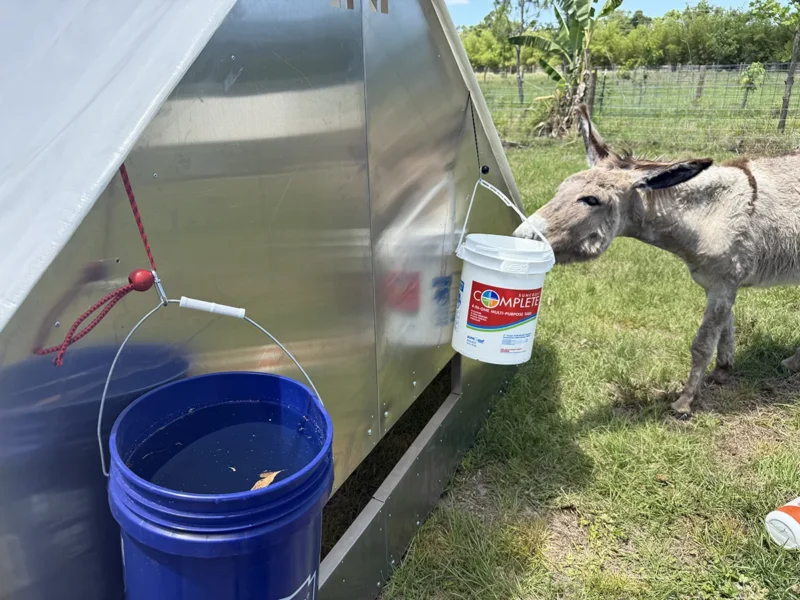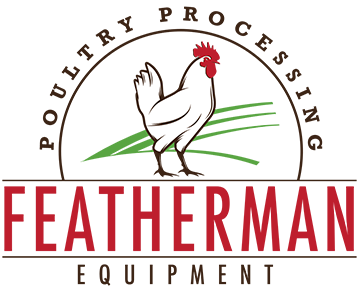How To
From Day 1 to Harvest in a Chicken Tractor!
How to brood, shift, and harvest pasture-raised poultry the Featherman way

Brooding in a Chicken Tractor
When I homesteaded, I didn’t have any outbuildings to brood in, so I brooded in my Prairie Schooner, a PVC-framed, tarp-covered experiment on PVC skids. It turned out so well that I continued to brood outdoors after building a barn.
I suggest you consider it too, even if you already have outbuildings. Here’s why.
You’re using a chicken tractor, right? Well, consider it if not.
(I’ll go into the long story of benefits of fresh daily salad bars in easy-to-move, predator-safe chicken tractors in another post. Brooding on pasture is on that benefits list.)
You can keep the chicks warm in your chicken tractor with a propane-burning hover—there are several good ones available. I used Shenandoah Valley. Don’t schedule the first batch too early. They can handle cold and wet conditions because you’ll keep them warm and dry (I’ll tell you how), but you don’t want to fight against it too much. In northern Missouri, I waited till May.
Inside your tractor will be a hover big enough space for all your chicks to get under—or close enough—for warmth. Just as important is enough room away from the hover to eat, drink, run, and be a chick.
You will have a plush mattress of thick bedding to keep them well off the ground. I put newspaper over my wood shavings for the first day or two so they wouldn’t eat them!
Have a couple of thermometers handy and check them often—98 degrees on day 1, then drop a degree each day for four days. Primarily, keep an eye on the chicks. They should be running, drinking, eating, singing, and resting comfortably. If they are stacking on top of each other, they are cold. If they are far from the heat source, wings outstretched, they are too hot.
After day 4 at 95 degrees, they will know how to bunch up and have some mass to keep warm. You may remove the hover if the weather permits.
Set out a stool or bucket and observe them for those first four days. You will learn a lot and be confident in your caregiving.
Drafts are the enemy of baby chicks. You want air movement up high, but not at ground level. Wrap your tractor in a tarp with vent holes at the top. If there’s enough room, go inside and sit–this assumes a peaked roof, human-sized coop.
Have your tractor sited where rain will not pool inside or run through. If it does, you will have to elevate the chicks out of the water. They cannot tolerate wet, even if it’s just their toes! Thunderstorm in the night? Get up and check things. Those first four days are especially critical.
That goes for their entire life. If a cold rain comes, you’d better have plenty of straw or old hay to get them up out of the wet.
Gradually, after that, you will introduce more outdoors to them. The Schooner was hard to make chick-tight, so I always had escapee foragers. I made sure they were tucked in bed at night, but they taught me they were willing and capable foragers at four days old! You have to go looking for them and put them back to bed—don’t assume they’ll make it back themselves.
Weather permitting, remove tarps and shift your tractor to fresh grass every few days after the first week. Just make sure the chicks can still get high and dry, and there are no bad drafts at night.
Shifting With Ease in a Well-Designed Tractor
On the first few tractor shifts, enlist a teammate to get behind the tractor and help shoo the birds forward and not get mashed. The best device to help do this is a leaf blower!
Be patient here. They will learn your routine quickly and soon be sprinting to nab whatever it is they nab when you give them new real estate.
At week two, shift them daily. Your tractor must be an efficient mover. This reduces the risk of crushing chickens. In a good system, that won’t happen.
A good system has smooth movement and no lurches. Its weight is manageable. The wheels go up and down smoothly and evenly, and the gaps do not let the chicks out.
The handle should be comfortable and at a good height when you are moving it. The handle weight may effectively be lightened by adding weight to the tractor behind the wheels—cantilevered. (Photo)
If it requires too much effort to move the tractor, your actions will be clumsy, uncontrolled, and dangerous to you and your livestock.
A good feature for your tractor is adjustable flaps (or a spare tarp). Also, a peaked roof not only lets you work comfortably inside—it allows heat to rise, so there’s never a need to open a side for ventilation.
A new feature Featherman has incorporated in Chicken Ship 2 is low side walls (2’) with a 6’ peak. This keeps wind resistance to a minimum and lowers the center of gravity.
Speaking of wind, have a windy weather anchor kit ready and use it whenever you think you need to. Hanging 5-gallon buckets of water on the sides helps a lot. Drill-driven earth anchors with web straps and carabiners are best.
It goes without saying that one of the biggest benefits of brooding in your tractor is that you never have the chore of collecting chicks and taking them to the field. One less farm-lifting chore! Yeah!
Harvesting With the Right Crates, then Repeat!
Okay, party’s over—time to lift.
Bring your good transport crates to the tractor the night before. There are good crates and crappy crates. Good crates won’t cut you, poke you, or smash your fingers or chicken toes. (Many do, and it’s because the manufacturers went cheap on the amount of plastic ribbing at the bottom, so the chicken can wrap its whole toe around it and get trapped when the coop is set down. This is a criminal piece of manufacturing, second only to the square-sided kill cones that birds can back out of. Another story…)
Use red light headlamps, work quietly, and move quickly. I like to push my hands into the crowd at ground level to get as many feet between my fingers as possible, then tighten the grip and sweep the bundle up and into the transport crate. With luck there were eight—a full crate—and the crate door may be shut.
The empty crates make handy, movable walls for crowding and catching.
I do not recommend carrying crates individually. The human body is not made to do that well. You, your crate, and your helpmate will fit fine through the tractor door.
With a quick cleaning of waterers and feeders, a new bedding of shavings covered with newspaper, you are ready to tarp-wrap your tractor and get more chicks brooding on pasture!
View Our Portable Chicken Coops
